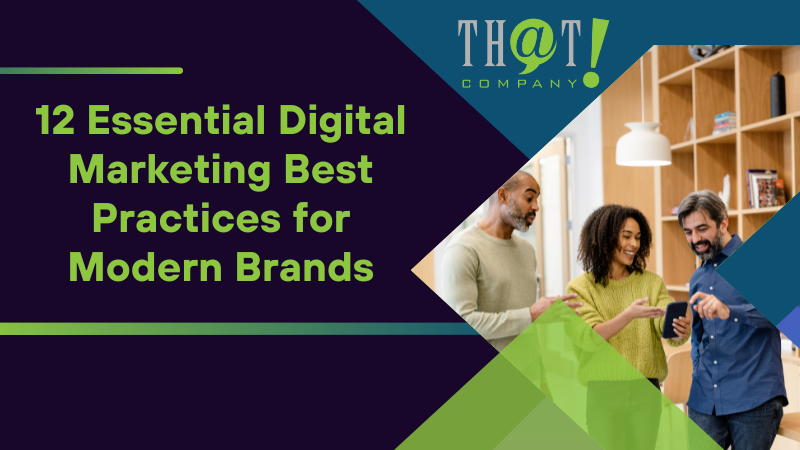
To excel in digital marketing, mastering a set of essential best practices is key. This no-nonsense guide cuts straight to the chase. Equipping you with 12 digital marketing best practices that are indispensable for any modern brand. You’ll discover how to utilize white label marketing to your advantage, delve into audience analysis for impactful content, leverage SEO, maximize social media, and tailor your advertising with precision. Get ready to navigate the digital landscape with strategies that are straightforward, effective, and ready to implement.
Key Takeaways
- White label digital marketing offers tremendous strategic advantage. Without the need for heavy initial investments and can quickly empower businesses with sophisticated digital marketing campaigns. Utilize the expertise of established partners like That! Company.
- A successful digital marketing strategy is based on a deep understanding of the target audience. Employing customer personas and segmentation to craft personalized and engaging content. Make sure they resonate with consumers and aligns with their behaviors and preferences.
- Measuring and analyzing performance with the right KPIs and analytics tools is crucial for refining digital marketing strategies. This is distinguishing between actionable insights and vanity metrics, and steering campaigns towards achieving specific business goals and optimizing ROI.
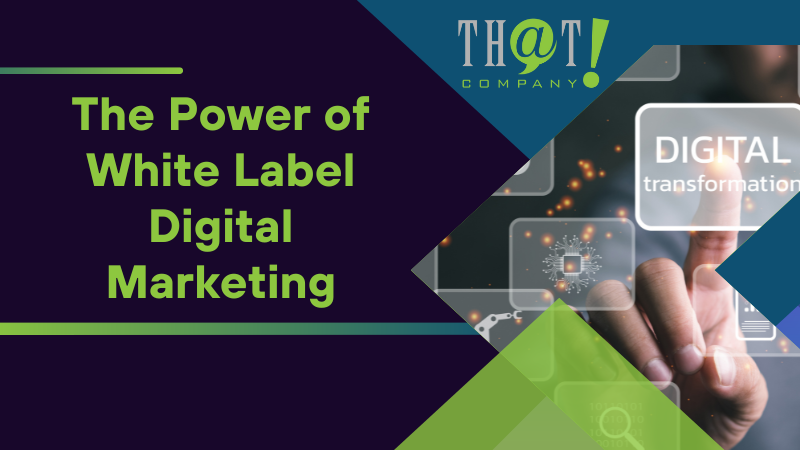
The Power of White Label Digital Marketing
Astute businesses recognize the immense potential in leveraging white label digital marketing to amplify their brand’s reach and resonance. At its core, digital marketing is the pulse of a business’s online presence. It is a multifaceted approach that encompasses everything from SEO to social media engagement. The art and science of positioning your brand in the digital cosmos where potential customers orbit, seeking solutions you provide. That! Company, heralded as “The Digital Marketing Agency That Other Digital Marketing Agencies Use,” exemplifies the pinnacle of white label service provision.
White label digital marketing, particularly through the offerings of That! Company, propels businesses into new frontiers of market penetration and growth, while ensuring the continuity of their brand message. Without the need to invest heavily in building an in-house team or technology stack, companies can deploy sophisticated digital marketing campaigns. Allowing to harness the expertise of a seasoned partner. That! Company, with nearly two decades of experience, has mastered the intricacies of digital marketing, enabling partners to focus on their core business objectives.
Benefits of White Labeling
The strategic advantage of white labeling lies in its ability to:
- Increase brand awareness without the significant investment associated with creating solutions from the ground up
- Sidestep the costs and complexities of complex training, hiring, and even establishing a salesforce
- Gain instant access to high-quality digital marketing services
- Facilitate rapid market entry and operational scalability
The flexibility and professional expertise that come with such services make white labeling an attractive option for businesses.
Moreover, applying a company’s brand to superior white label services can significantly bolster its reputation. Imagine being able to offer cutting-edge digital marketing solutions. All under your own brand umbrella – it’s a game-changer for building trust and establishing market authority. This strategic move not only cements brand loyalty but also opens up avenues for business growth and diversification.
That! Company’s White Label Services
At That! Company, the white label digital marketing services span the gamut from search engine optimization to social media marketing, and beyond. This comprehensive suite ensures that agency partners can offer a full spectrum of digital marketing solutions to their clients. To maintain the sanctity of the partnership, That! Company is a white label digital marketing company that operates with absolute confidentiality, utilizing client-specific email addresses and private communication channels to preserve anonymity.
The collaboration extends beyond service provision; That! Company actively engages in direct sales of partner-provided services and channels clients back to their partners’ sales teams. This synergy fosters mutual success. It allows partners to expand their service offerings without diluting their brand’s essence or compromising on quality. It’s a seamless integration that empowers agencies to scale with confidence and efficiency.

Developing a Target Audience-Centric Strategy
Diving into the digital marketing realm without a clear understanding of your target audience is akin to setting sail without a compass. A target audience-centric strategy not only refines your marketing efforts but also lays the foundation for robust brand-consumer connections. It’s about aligning your business offerings with the preferences and needs of your consumers. Which will make your marketing messages resonate on a deeper level.
This approach optimizes marketing budgets by homing in on the most engaged consumers, ensuring every dollar spent is a strategic investment toward building lasting relationships. It’s a dynamic strategy that adapts to the ever-evolving customer behaviors and preferences, maintaining the relevance and impact of your marketing initiatives.
Creating Customer Personas
The creation of customer personas is a meticulous process that lays the groundwork for personalized engagement. It involves a deep dive into user behavior, utilizing various research methods to paint a vivid picture of potential customers. By gathering demographic information such as age, occupation, and interests, you can begin to craft narratives that resonate with your audience.
Analyzing past purchase history and website interaction habits provides further clarity, allowing you to tailor your messaging and content to meet the specific expectations of your audience. This understanding also uncovers the motivations driving your customers, whether it’s the pursuit of value or convenience, guiding your marketing strategy to align with these driving forces.
Segmenting Audiences
Audience segmentation is the compass that guides your digital marketing campaigns to their intended destinations. By breaking down your audience into distinct groups, you can tailor your strategies to each segment, resulting in more meaningful engagements and, ultimately, increased revenue. Imagine crafting email campaigns so relevant that they lead to a 760% increase in revenue – that’s the power of segmentation.
Diving deeper, segmentation also informs the types of content preferred by your audience, ensuring your marketing efforts are not just seen but felt. It’s about creating ad versions that speak directly to the hearts and minds of your audience, making every interaction an opportunity to deepen the connection.

Crafting a Winning Content Marketing Plan
A masterful content marketing plan is your brand’s blueprint for storytelling success. It starts with setting clear, strategic goals and gaining a profound insight into your target audience’s world. This plan is your compass, guiding you through the creation and promotion of content that not only captivates but also converts.
With a focus on aligning content with overarching business goals, you can ensure that every piece of content, every blog post, and video serves a purpose that resonates with your audience and supports your brand’s mission. Regular analysis of performance data then becomes your sextant, steering your content marketing strategy towards continuous improvement and greater alignment with your goals.
Types of Content
In the realm of content marketing, variety is more than the spice of life; it’s the essence of engagement. The selection of content types, from insightful blog posts to eye-catching infographics, must resonate with the interests and consumption habits of your target audience while serving your brand’s strategic aims.
Each type of content plays a unique role in the grand narrative of your brand, catering to different preferences and learning styles within your audience. Whether it’s an in-depth ebook that provides substantial value or a series of podcasts that entertain and inform, your content mix is the palette from which you paint your brand’s digital presence.
Content Distribution Channels
The journey of your content from creation to consumption is a critical aspect of your marketing strategy. Choosing the right distribution channels is about understanding where your target audience spends their time and how they prefer to consume content. This alignment ensures that your content not only reaches your audience but does so in a way that facilitates engagement and drives action.
Whether it’s through social media, email, or search engines, the promotion of your content must be strategic, considering your business goals, platform dynamics, and budget constraints. By employing digital marketing strategies, such as email marketing, you can propel your content into the inboxes of engaged subscribers, encouraging shares and expanding your reach.

Mastering Search Engine Optimization (SEO)
Search Engine Optimization (SEO) is the lighthouse that guides internet users to your digital shores. By enhancing your website’s visibility and positioning in search engine rankings, SEO creates a beacon for an increase in organic search clicks and visits. This traffic is not just any traffic; it’s composed of a target audience with a higher likelihood to engage with your content, products, or services. There are best white label SEO services that you can rely on.
The beauty of SEO-generated traffic is its sustainability; it provides a steady flow of potential customers without the ongoing costs associated with paid advertising. And when approximately 72% of digital marketers tout relevant content creation as the most effective SEO tactic, it’s clear that mastering SEO is a non-negotiable for a powerful digital presence.
On-Page and Off-Page SEO
SEO is a tale of two cities: on-page and off-page. On-page SEO is the craftsmanship of optimizing web pages, ensuring they are rich with target keywords and swift to load, enhancing search engine rankings. Off-page SEO, on the other hand, is about building your site’s authority through external endorsements, primarily backlinks, signifying the site’s credibility and popularity.
While on-page SEO tells search engines what your website is about, off-page SEO whispers to them how authoritative and popular it is. Additionally, the social signals emanating from social media also influence off-page SEO, with search engines integrating social information into their algorithms, which plays a role in a company’s overall search visibility.
Keyword Research and Implementation
The compass of SEO is keyword research, the process of uncovering the terms and phrases users type into search engines. Selecting the right keywords is a delicate balance of relevance, search volume, and competition, ensuring your content speaks the language of your target audience.
It’s about weaving these keywords naturally into your content, from blog posts to landing pages, focusing on topics that have a high search demand and thus attracting more organic traffic to your site.

Harnessing the Power of Social Media
Social media is the digital town square where brands and consumers meet. By harnessing the power of social media marketing, businesses can increase website traffic, drive sales, and cultivate a strong brand presence. It’s a landscape where brand values can be shared authentically, aligning with consumer expectations to foster trust and loyalty.
Social platforms enable brands to:
- Weave engaging narratives that resonate with their target audience
- Enhance brand engagement
- Amplify trust through user-generated content and a participatory culture
- Create a community that rallies around the brand
Choosing the Right Platforms
Selecting the right social media platforms is like choosing the right gatherings to attend; you want to be where your audience is most active and engaged. Understanding your target audience’s preferences, current trends, and successful content types guides you to the social platforms where your brand’s voice will be heard.
Each platform has its unique characteristics and strengths that must be considered in light of your business needs and target demographics. By critically examining competitors’ social media strategies, businesses can identify opportunities for improvement and adapt their strategies accordingly. With tools like UTM parameters, you can track the customer conversions attributed to social media, further informing your choice of platforms.
Creating Engaging Social Media Content
Engaging social media content is the magnet that attracts and retains followers. It’s about demonstrating a commitment to customer service and showcasing promptness in responding to feedback. Direct interaction with customers on social platforms provides immediate feedback opportunities and personalized engagement, fostering a strong connection.
Strategies for crafting engaging content include storytelling techniques, ensuring relevance, and incorporating user-generated content to foster a sense of community. When your content resonates with your audience, it leads to more meaningful and lasting engagement.

Designing Effective Display Ads
In the bustling digital marketplace, effective display ads, including video ads, are your billboards, catching the eye and compelling action. These ads should mirror your brand guidelines, maintaining consistency and fostering brand awareness and loyalty. A well-crafted value proposition in your display ad can make the difference between blending in and standing out, enticing the audience to learn more. When creating display ads, it’s essential to keep these factors in mind to achieve success in your display ads campaign.
Understanding your target audience is essential when selecting the ad type and format for your display ad campaign, as personalization can significantly improve conversion rates. When ads and landing pages are in harmony, trust is built, and user experience is elevated, leading to more engaged visitors and a lower bounce rate.
Responsive Display Ads
Responsive display ads are the chameleons of the digital ad world, adapting in size to fit various ad spaces and devices for optimal performance. Focusing on the most effective banner sizes recommended by Google can enhance your ad’s visibility and impact in the ad space. The creation of multiple banner variations allows for a greater breadth of impressions and opportunities to captivate potential customers.
Optimizing display ad performance is an ongoing process that involves reviewing campaigns and conducting competitive analysis to gain insights, often aided by tools like AdClarity. As image ads are uploaded in their final form, it’s crucial to design with responsiveness in mind, ensuring they look great no matter where they appear.
Testing and Optimization
Experimentation is the lifeblood of effective display advertising. A/B testing enables the discerning marketer to determine which ad elements resonate most with the intended audience. By focusing on one variable at a time, brands can pinpoint the attributes that enhance engagement and lead to higher conversion rates. Some key elements to consider testing include:
- Headlines
- Images
- Call-to-action buttons
- Colors
- Ad placement
By systematically testing and optimizing these elements, marketers can continuously improve the performance of their display ads, including their Google ads campaigns.
The process of testing and optimization is a journey of refinement, where each iteration brings you closer to perfection. Whether it’s a static image or an animated banner, each test provides valuable insights, ensuring your ads captivate and convert with increasing precision. It’s about embracing a culture of continuous improvement, where each click and conversion is a stepping stone to greater success.
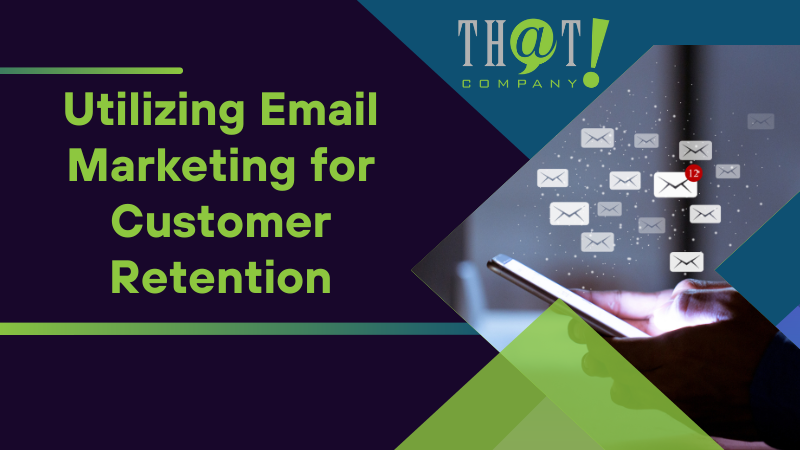
Utilizing Email Marketing for Customer Retention
Email marketing is the digital equivalent of a heartfelt handwritten note — personal, direct, and highly effective in fostering brand loyalty. This tool is instrumental in keeping your existing customers close, reminding them of your brand’s value, and incentivizing repeat business. It’s about nurturing a relationship that extends beyond the initial purchase, ensuring your customers feel valued and engaged.
Retention-focused email campaigns are tailored to existing customers, with the intent to motivate ongoing engagement and reinforce brand commitment. Whether it’s through exclusive offers, insightful content, or personalized greetings, these emails are a powerful touchpoint that can significantly enhance customer loyalty and, as a result, your bottom line.
Building an Email List
The cornerstone of any successful email marketing campaign is a robust and engaged email list. Strategies for building this list range from creating gated lead-generation offers, like a free ebook on a landing page, to developing online tools or resources that users can access upon providing their email address. Each subscriber is a potential ambassador for your brand, a connection that can be cultivated and converted into a loyal customer.
Opt-in campaigns are a strategic move to ensure the health of your email list, allowing subscribers to re-confirm their interest in your brand or opt out if they choose. This process not only cleanses your list but also ensures that your efforts are focused on individuals who are genuinely interested in what you have to offer.
Crafting Compelling Email Campaigns
Compelling email campaigns are a blend of art and science, where the right words can lead to a surge in customer retention and sales. It starts with a captivating hook, a touch of personalization, and a clear and repeated call to action — the framework of an email that not only captures attention but also drives action.
Incorporating interactive elements within your emails can turn a static message into an engaging experience. Whether it’s a survey, a game, or an animated product showcase, these elements invite the customer to engage with your brand in a more meaningful way, enhancing the likelihood of repeat business and referrals.

Implementing Omnichannel Marketing
Omnichannel marketing is the harmonious integration of multiple platforms, creating a seamless customer experience regardless of where or how a customer interacts with your brand. This approach ensures that every touchpoint, from an in-store visit to a social media ad, contributes to a cohesive brand narrative. It’s about recognizing that a customer’s journey is not linear but a web of interactions that, when woven together, form a strong, consistent brand presence. A white label website developer is someone you can trust on this matter.
Selecting the right communication platforms is critical to effective omnichannel marketing. After segmenting your target audience, it’s essential to choose channels that they frequent to ensure your messages are heard. It’s a strategic approach that recognizes the unique ways in which different groups interact with your brand, tailoring the experience to fit their preferences and behaviors.
Integrating Online and Offline Channels
The fusion of online and offline marketing channels presents an opportunity to paint a complete picture of your brand for your customers. By ensuring consistency in visuals and messaging across all mediums, from digital ads to in-store displays, you create a unified customer journey that reinforces brand recognition and trust. This integration is the bridge between the physical and digital realms, offering a holistic experience that resonates with customers at every touchpoint.
Challenges such as data silos and complex analytics can arise when integrating these channels. However, with careful planning and the right tools, these challenges can be overcome, providing a rich and detailed understanding of how your marketing efforts are performing across the board. It’s a strategic endeavor that requires attention to detail and a commitment to consistency.
Personalizing the Customer Experience
In today’s digital landscape, personalization is not just preferred; it’s expected. Most consumers demand experiences tailored to their needs and behaviors. By identifying and segmenting your target audience, you can deliver marketing campaigns that feel bespoke. This will lead to increased customer engagement and revenue. It’s about making each customer feel like the star of their own narrative. In which your brand plays a key, supportive role.
Data cleansing is a critical step in personalizing digital marketing initiatives. This ensures that the data driving your decisions is accurate and up-to-date. Whether it’s personalizing banner ads or crafting an email sequence, the goal is to make your marketing resonate. Moreover, on an individual level, boosting brand loyalty and customer retention.

Measuring and Analyzing Digital Marketing Performance
The compass guiding your digital marketing strategy is a robust set of Key Performance Indicators (KPIs). These measurable values are beacons that illuminate your path towards achieving marketing objectives. They filter out the noise. Then, directing your focus to the metrics that matter most to your initiatives and helping you discard those that don’t contribute to your goals.
Digital marketing performance can be a complex web of platforms and methods used to connect with your target audience. To navigate this complexity, precise measurement and analysis are critical for assessing the effectiveness of a digital marketing campaign and guiding future strategies. Setting specific, narrow goals and using KPIs to track progress is essential to measure digital marketing success effectively.
Selecting Relevant KPIs
Choosing the right KPIs is about honing in on the vital signs of your business’s health, such as conversions or visitor rates. These indicators, including:
- website traffic
- conversion rate
- cost per acquisition
- return on investment
- click-through rate
are the metrics that truly reflect the impact of your digital marketing efforts. It’s about distinguishing actionable metrics from vanity metrics, which may look impressive on paper but don’t drive real growth.
By selecting relevant KPIs, you gain the clarity and insight. These are needed to make informed decisions that steer your marketing strategies towards success. Whether it’s optimizing a campaign or tweaking your content strategy, these KPIs are the navigational stars that guide your journey in the digital marketing universe.
Using Analytics Tools
Analytics tools are the telescopes through which you observe the vastness of your digital marketing universe. Google Analytics, for example, tracks crucial KPIs such as website traffic, bounce rate, and conversion rate. Above all, this is providing the data you need to assess your marketing success. These specialized tools, like Google Analytics and YouTube Analytics, offer detailed performance analysis by monitoring key metrics related to traffic and user engagement.
Differentiating between actionable and vanity metrics is crucial, and analytics tools are indispensable in this endeavor. By providing accurate data and insights into web traffic and user behavior, these tools enable a deeper understanding of campaign effectiveness. Some popular analytics tools include:
- Google Analytics
- Adobe Analytics
- Mixpanel
- Kissmetrics
These tools help you track key metrics such as page views, bounce rate, conversion rate, and user engagement. All are allowing you to fine-tune your tactics for maximum impact.
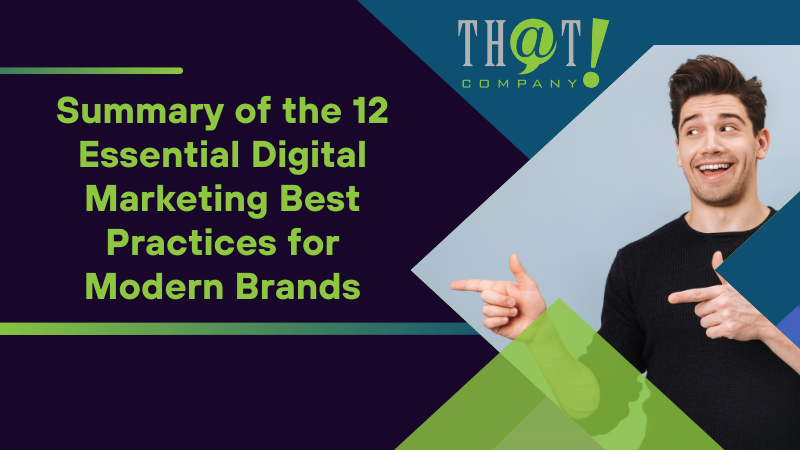
Summary
In the tapestry of digital marketing, each thread therefore from the strategic use of white label services to the meticulous measurement of campaign performance. Moreover, intertwines to create a compelling brand narrative. By embracing these essential best practices, modern brands can weave a story that resonates deeply with their audience, fostering loyalty and driving business growth. Admire the masterpiece of your marketing efforts. Remember that the key to enduring success is continuous adaptation, learning, and a steadfast commitment to your audience.

Frequently Asked Questions
What is the best digital marketing practice?
The best digital marketing practice involves identifying the target audience, developing a content marketing strategy. Meanwhile incorporating SEO tactics, utilizing omnichannel marketing, and employing email campaigns, among other key practices. These strategies help in reaching and engaging the right audience with relevant content and accurate data.
What are the 7 C’s of digital marketing?
The 7 C’s of digital marketing are essential principles. They guide successful campaigns, including Content, Context, Community, Collaboration, Communication, Capture, and Change. They contribute to a robust digital marketing strategy by redefining how businesses connect with their audience.
What are the 5 P’s of digital marketing?
The 5 P’s of digital marketing are Product, Price, Promotion, Place, and People. They serve as a framework to guide marketing strategies and keep marketers focused on the right areas.
What is the goal of white labeling?
The goal of white labeling is to enhance brand recognition and customer loyalty. Moreover, this is by presenting products or services as if they were created by the rebranding company.

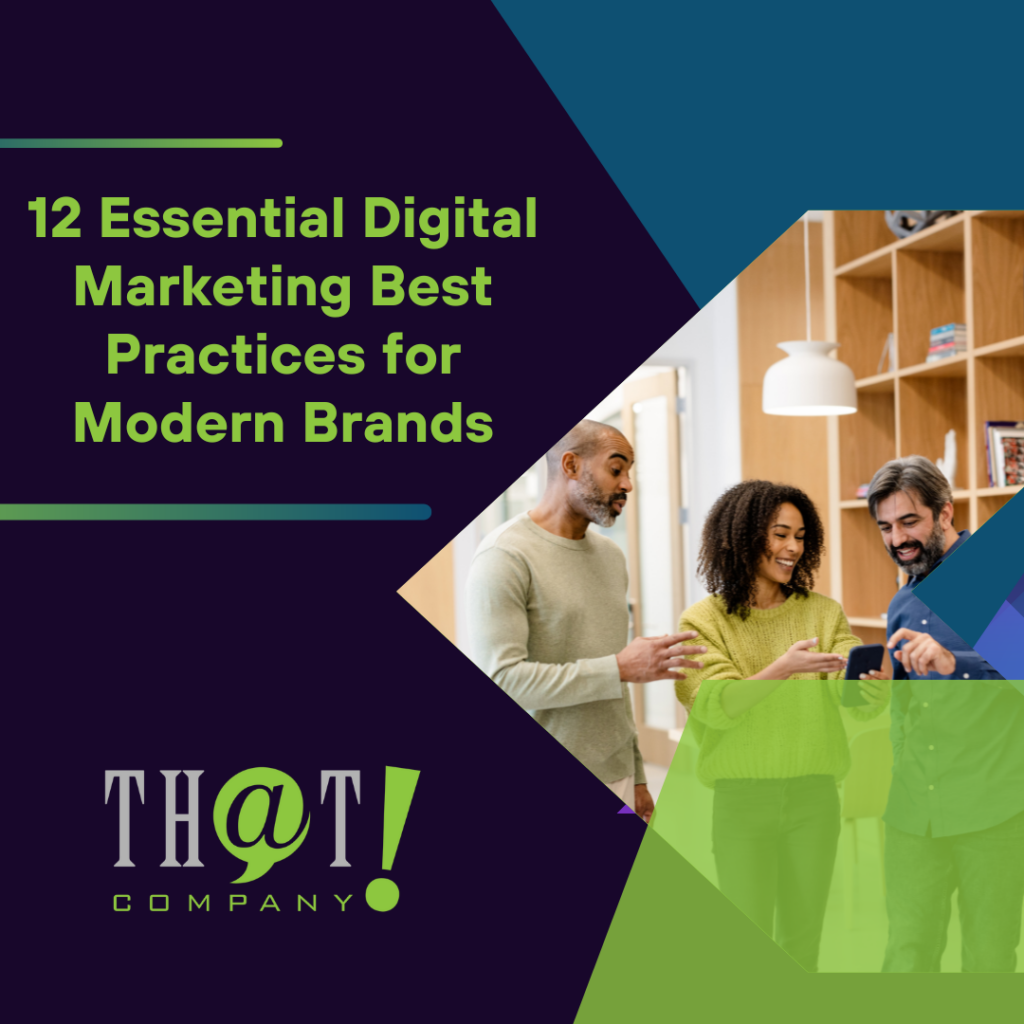





















 Talk With Us
Talk With Us  Give Some Love
Give Some Love 


